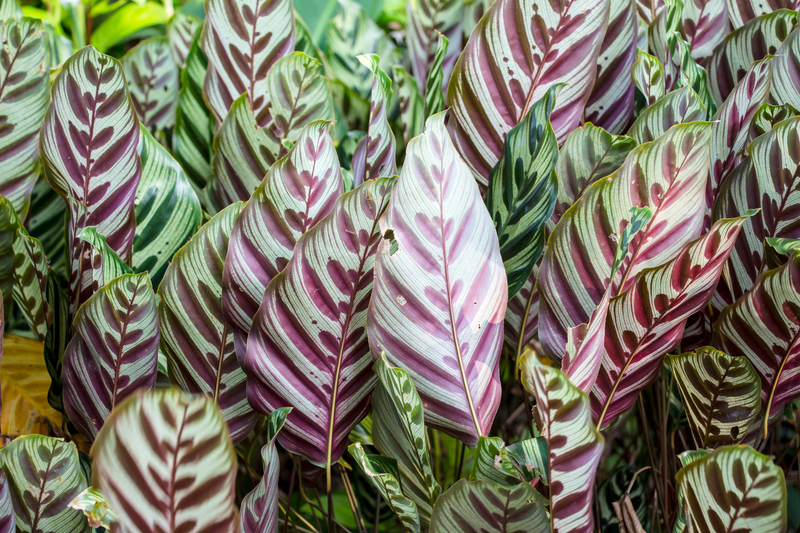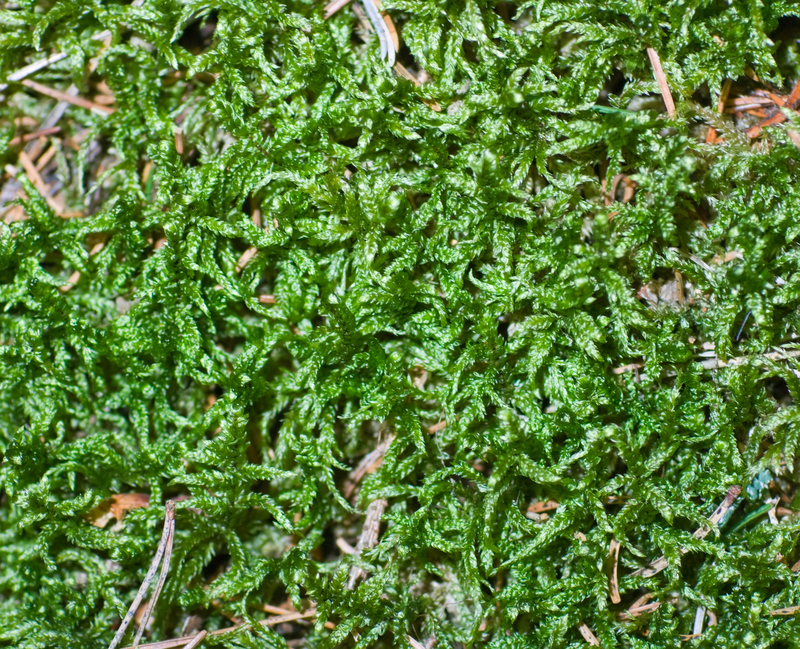Kick Off Your Gardening Dream with These 9 Key Tips
Posted on 14/08/2025
Kick Off Your Gardening Dream with These 9 Key Tips
Gardening is one of the most rewarding hobbies, providing an escape into nature, the satisfaction of nurturing life, and the joy of fresh flowers, herbs, fruits, and vegetables. Whether you have a spacious yard or a small balcony, starting your garden can seem daunting. However, with the right guidance, even beginners can experience the thrill of seeing their plants thrive. In this comprehensive guide, you'll discover 9 essential gardening tips designed to help kick off your gardening dream. Dig in and grow your green thumb!
1. Know Your Growing Zone
Before planting a single seed, it's crucial to identify your plant hardiness zone. The climate in your area dictates which plants will thrive. The USDA Plant Hardiness Zone Map is an excellent resource for U.S. gardeners. Understanding your zone will help you choose the right plants, set realistic expectations, and ensure success.
Why it matters: Some plants flourish in warm, sunny climates, while others prefer cooler temperatures or specific soil types. Knowledge of your zone is the foundation of a healthy garden.
Tips to Find Your Zone
- Visit official gardening websites or your local extension office.
- Observe what plants your neighbors are growing successfully.
- Keep temperature, frost dates, and rainfall in mind.

2. Start Small and Expand Gradually
It's easy to envision a lush, overflowing landscape, but beginning with a manageable space is critical. Kickstarting your gardening dream is more enjoyable when you're not overwhelmed.
How to Begin
- Choose a small plot or a few containers.
- Focus on 3-5 easy-to-grow plants for beginners (like tomatoes, herbs, or zinnias).
- Allow yourself time to learn and adjust before adding more varieties or expanding your garden bed.
Starting small helps you master the basics and ensures that gardening remains a joy--not a chore.
3. Focus on Soil Health
The secret weapon of every successful garden is rich, healthy soil. Plants need proper nutrients, texture, and drainage.
Steps to Enrich Your Soil
- Test your soil's pH and nutrient content with an at-home kit or through your local extension service.
- Amend your soil with compost, organic matter, or fertilizers as recommended.
- Till or aerate compacted soil to improve root penetration and water absorption.
Maintaining good soil is the backbone of garden success. Reviewing soil quality regularly can prevent many common issues and promote vigorous growth.
4. Choose the Right Plants for Your Garden
Gardening dreams come true with careful plant selection--matching your location, soil, and lifestyle. Are you looking for low-maintenance plants or eager for quick results with fast-growers?
Consider light requirements (sun vs. shade), water needs, and resistance to local pests and diseases.
Best Plants for Beginners
- Marigolds - Vibrant, hardy, and pest-repelling.
- Basil - Easy to grow and great for culinary use.
- Beans - Fast-growing and improves soil nitrogen.
- Radishes - Rewarding quick growers.
Selecting plants suited for your unique garden environment ensures an enjoyable and productive season.
5. Water Wisely
Water is vital, but proper gardening involves more than just turning on the hose. The key is to water "smart"--not just "more."
Watering Tips for Thriving Plants
- Water early in the morning to minimize evaporation and prevent fungal diseases.
- Use mulch to retain soil moisture and regulate temperature.
- Check soil an inch below the surface to determine if watering is needed. Overwatering can cause root rot.
- Consider efficient irrigation systems like soaker hoses or drip lines.
Understanding the specific water needs of your chosen plants is instrumental in kicking off your gardening dream on the right foot.
6. Learn the Art of Plant Spacing
Crowded plants struggle for water, nutrients, and sunshine. Proper spacing allows for healthy airflow, reduces disease, and boosts yields or blooms in your garden.
Spacing Guidelines
- Read seed packets or plant labels for spacing recommendations.
- Allow extra room for sprawling or climbing plants, like squash or cucumbers.
- Mark rows before planting for even distribution.
Being attentive to spacing ensures each plant has the resources it needs--resulting in a lush, organized, and high-performing garden space.
7. Embrace Companion Planting
Companion planting is a timeless gardening strategy where certain plants are cultivated near each other for mutual benefits. This key tip is a game-changer in promoting a healthy garden ecosystem and can help deter pests naturally.
Examples of Companion Planting:
- Basil & Tomatoes: Basil wards off tomato hornworms and improves growth.
- Carrots & Onions: Onions repel carrot flies.
- Marigolds scattered throughout: Fend off nematodes and various insects.
Incorporating companion planting elevates not only productivity but also the overall health of your garden.
8. Stay On Top of Weeding and Mulching
Weeds compete for nutrients and can harbor plant diseases or pests. Regular weeding and using organic mulch can save you time and trouble throughout the season.
Simple Weeding and Mulching Strategies
- Hand-pull weeds before they flower or set seeds.
- Spread a few inches of mulch (such as straw, bark, or leaves) around your plants.
- Mulch helps maintain moisture, reduce weeds, and keep soil temperatures stable.
Consistent care in maintaining your beds prevents weeds from becoming overwhelming and gives your plants their best shot at success.
9. Maintain a Gardening Journal
One of the most underrated yet beneficial tips is to keep a garden journal. Documenting what you plant, when you plant it, soil and weather conditions, and outcomes can help you refine your approach year after year.
What to Track in Your Journal
- Planting and transplanting dates
- Watering and feeding schedules
- Weather patterns and first/last frost dates
- Pest or disease occurrences and solutions
- Harvest yields
A gardening journal is a valuable resource for identifying patterns, avoiding past mistakes, and celebrating your progress as your gardening adventure flourishes.
Bonus: Keep Learning and Connecting
Every seasoned gardener will tell you that gardening is an ongoing journey of discovery. There are always new techniques, plants, and tools to explore. Don't hesitate to:
- Join a local gardening club or online gardening community for advice and camaraderie.
- Subscribe to gardening magazines, blogs, and podcasts for inspiration and seasonal tips.
- Visit botanical gardens to observe plant pairings and creative layouts.
The more you learn, the better equipped you'll be to troubleshoot problems and experiment confidently.

Frequently Asked Questions (FAQs) About Starting a Garden
What's the easiest type of garden for beginners?
Container gardens or small raised beds with herbs, lettuce, and flowers are ideal for beginners. These gardens require less space and maintenance, making them perfect for those just starting their gardening dream.
How can I garden if I have poor soil or limited space?
*Raised beds* or container gardening are your friends! Use bagged garden soil or create your own potting mix to ensure your plants have everything they need, regardless of what's beneath your feet.
How often should I water my new garden?
Watering depends on climate, soil type, mulch use, and plant varieties. In general, a deep soak once or twice per week is better than frequent, shallow watering. Always check the soil before adding more water--and adjust as needed during hot spells or rainy seasons.
Where can I find affordable seeds and starts?
Check local nurseries, garden centers, and farmers' markets. Many communities also have seed swaps or library programs. Online suppliers offer a wide range of options--always choose reputable retailers for healthy, viable seeds and plants.
Final Thoughts: Your Gardening Dream Awaits
Kicking off your gardening journey doesn't require a green thumb--just a willingness to learn, experiment, and enjoy the process. With these 9 key gardening tips, you'll cultivate confidence and grow your garden, one season at a time. Remember, every gardener faces challenges, but perseverance and curiosity bring abundant rewards.
So grab your gloves, dig into the earth, and let your gardening dreams blossom!



